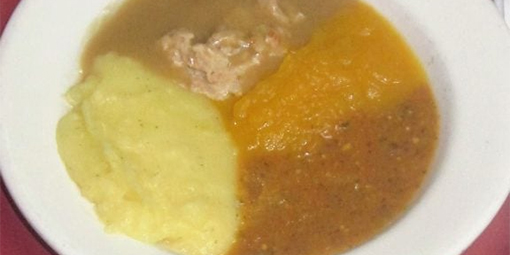Food trends in foodservice are ever changing.
The latest food trend in Residential Aged Care facilities involves extending the shelf-life of texture modified food.
Left-overs from the tray-line, Bain Marie or meals not eaten are subject to cooling and texture modification and then frozen or chilled for extended periods of time before undergoing further handling and a reheating step to kill pathogens.
Unsafe practises start out (usually via email) with “what’s everyone else doing”?
What are the risks……
In weighing up the risks, this practise is on the spectrum of frightening.
I have two key questions.
How do these facilities know this food is safe?
What checks have they performed?
Texture modified food requires extra handling and preparation. There is an increased potential for cross contamination and cases of foodborne illness and deaths have been linked to hygiene failures (i.e. cleaning and personal) and temperature abuse during this process.
The way forward…..
Preparing food for vulnerable populations requires competent and knowledgeable food handling employees and operational management adhering to a safe and tested validation procedures.
Doug Powell a former professor of food safety for seventeen years at universities of Guelph and Kansas State says validation is a critical aspect of any food safety management system.
Powell explains food safety validation “is the action taken by any food operation to confirm that the food safety controls are effective in controlling the food safety hazards – they prevent, eliminate or reduce a food safety hazard to an acceptable level”.
He says for the Residential Aged Care facility producing texture modified food “validation shows the food safety controls are achieved to a desired level on a consistent basis”.
It has been over ten years (and in the state of Victoria twenty years) since the introduction of mandatory food safety programs for Residential Aged Care. The key action points for hospitality managers and facility managers to embrace are:
- understanding the organisation’s food safety obligations
- all potential hazards that are reasonably expected to occur have been identified
- the effectiveness of food safety controls have been determined
- any changes to existing controls or the introduction of new controls should immediately prompt a re-validation of the Food Safety Management System
- ensure food handling employees have up-to-date and reliable calibrated thermometers and digital technology for monitoring purposes
- microbiological testing of food
- perform an ongoing review of the food safety system. This allows you to determine if the system does assure control of a specific process or if it needs modification and if so, when and where.
Final word….
Managers must lead and ensure food handling employees follow proper and safe practices – and the facilities Food Safety Management System and food law.
Its time food handlers are given quality, effective training, the tools and support needed to exercise effective control.
Seek out sound and reliable food safety advice from reputable industry sources.
A safer alternative is offered in my previous blog Shaping The Future Of Texture Modified Food
Want further information? Contact Andrew Thomson on 0422285720 or email info@thinkstsolutions.com.au
Special thanks to Gabrielle Thoreau
Think ST Solutions helps protect food businesses through innovation and risk reduction strategies.

